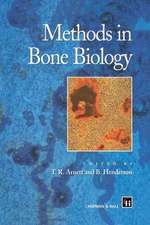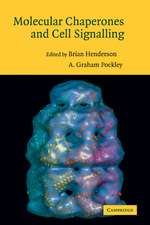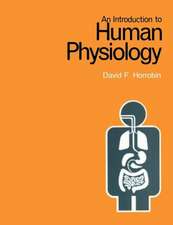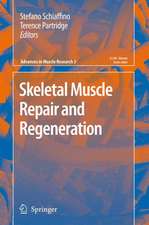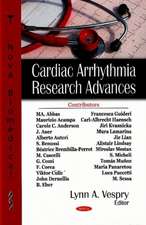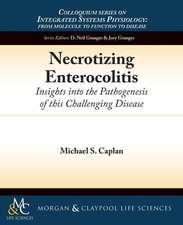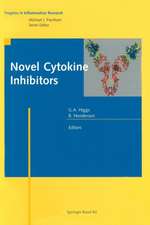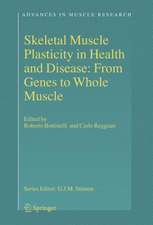Cellular Trafficking of Cell Stress Proteins in Health and Disease: Heat Shock Proteins, cartea 6
Editat de Brian Henderson, A. Graham Pockleyen Limba Engleză Paperback – 14 dec 2014
| Toate formatele și edițiile | Preț | Express |
|---|---|---|
| Paperback (1) | 1095.16 lei 6-8 săpt. | |
| SPRINGER NETHERLANDS – 14 dec 2014 | 1095.16 lei 6-8 săpt. | |
| Hardback (1) | 1107.58 lei 6-8 săpt. | |
| SPRINGER NETHERLANDS – 18 noi 2012 | 1107.58 lei 6-8 săpt. |
Din seria Heat Shock Proteins
- 15%
 Preț: 659.02 lei
Preț: 659.02 lei - 5%
 Preț: 732.92 lei
Preț: 732.92 lei - 15%
 Preț: 649.87 lei
Preț: 649.87 lei - 15%
 Preț: 649.87 lei
Preț: 649.87 lei - 15%
 Preț: 659.70 lei
Preț: 659.70 lei - 5%
 Preț: 728.69 lei
Preț: 728.69 lei - 18%
 Preț: 953.35 lei
Preț: 953.35 lei - 20%
 Preț: 558.40 lei
Preț: 558.40 lei - 18%
 Preț: 956.03 lei
Preț: 956.03 lei - 24%
 Preț: 790.27 lei
Preț: 790.27 lei - 24%
 Preț: 809.89 lei
Preț: 809.89 lei - 5%
 Preț: 1426.16 lei
Preț: 1426.16 lei - 20%
 Preț: 561.86 lei
Preț: 561.86 lei - 5%
 Preț: 1094.97 lei
Preț: 1094.97 lei - 18%
 Preț: 1119.24 lei
Preț: 1119.24 lei - 5%
 Preț: 1424.68 lei
Preț: 1424.68 lei - 5%
 Preț: 1411.17 lei
Preț: 1411.17 lei - 5%
 Preț: 1417.91 lei
Preț: 1417.91 lei - 5%
 Preț: 1116.21 lei
Preț: 1116.21 lei - 5%
 Preț: 1434.75 lei
Preț: 1434.75 lei - 5%
 Preț: 1107.21 lei
Preț: 1107.21 lei
Preț: 1095.16 lei
Preț vechi: 1152.81 lei
-5% Nou
Puncte Express: 1643
Preț estimativ în valută:
209.55€ • 218.81$ • 173.04£
209.55€ • 218.81$ • 173.04£
Carte tipărită la comandă
Livrare economică 15-29 aprilie
Preluare comenzi: 021 569.72.76
Specificații
ISBN-13: 9789400795907
ISBN-10: 9400795904
Pagini: 312
Ilustrații: XIV, 298 p.
Dimensiuni: 155 x 235 x 16 mm
Greutate: 0.44 kg
Ediția:2012
Editura: SPRINGER NETHERLANDS
Colecția Springer
Seria Heat Shock Proteins
Locul publicării:Dordrecht, Netherlands
ISBN-10: 9400795904
Pagini: 312
Ilustrații: XIV, 298 p.
Dimensiuni: 155 x 235 x 16 mm
Greutate: 0.44 kg
Ediția:2012
Editura: SPRINGER NETHERLANDS
Colecția Springer
Seria Heat Shock Proteins
Locul publicării:Dordrecht, Netherlands
Public țintă
ResearchCuprins
Preface.- Contents.- Note on Nomenclature.- Author Addresses.- Section 1 Historical Introduction to Secreted Cell Stress Proteins as Signalling Proteins.- Discovery of the Cellular Secretion of Cell Stress Proteins.- Discovery of the Agonist Activities of Molecular Chaperones and Protein-Folding Catalysts.- Identification of Cell Stress Proteins in Biological Fluids.- Section 2 Intracellular Trafficking of Molecular Chaperones and its Consequences.- Hsp27 Phosphorylation Patterns and Cellular Consequences.- Evidence on Cholesterol-Controlled Lipid Raft Interaction of the Small Heat Shock Protein HSPB11.- Hsp70 Chaperone Systems in Vesicular Trafficking.- Pathways of Hsp70 Release: Lessons from Cytokine Secretion.- Nucleolin: A Novel Intracellular Transporter of HSPA1A.- The Hsp90-Based Protein Trafficking System and Linkage to Protein Quality Control.- Section 3 Molecular Chaperones as Cell Surface Receptors and Receptor Ligands.- Cell Surface Molecular Chaperones and the LPS Receptor.- Hsp60: An Unexpected Cell Surface Receptor in Prokaryotes and Eukaryotes.- Pathophysiological Barriers Impeding the Delivery of Heat Shock Protein (HSP)-based Macromolecules and Nanotherapeutics to Solid Tumors.- The Chaperokine Activity of HSPA1A.- Molecular Chaperones and Scavenger Receptors: Binding and Trafficking of Molecular Chaperones by Class F and Class H Scavenger Receptors.- Grp78 (BiP): A Multifunctional Cell Surface Receptor.- Section 4 Extracellular Secretion of Molecular Chaperones in Prokaryotes and Eukaryotes.- Mycobacterium Tuberculosis Hsp60 as a Key Virulence Factor in Tuberculosis.- Hsp90 vs Conventional Growth Factors in Acute and Diabetic Wound Healing.- Circulating Molecular Chaperones in Health and Disease.- Index.
Textul de pe ultima copertă
Since the beginning of the 21st Century there has been a rapid increase in our understanding of the cellular trafficking mechanisms of molecular chaperones in eukaryotes and in prokaryotes. In the former, molecular chaperone trafficking can occur between the various cellular compartments, with concomitant movement of other proteins. Such events can also result in the release of molecular chaperones from cells. In bacteria, molecular chaperones are involved in the trafficking of other proteins and are themselves released into the external milieu. The increasing appreciation of the role of molecular chaperones and Protein-Folding Catalysts in the interplay between bacteria and the cells of their hosts is now an important area of research for understanding the mechanisms of infectious diseases. This volume brings together experts in the biochemistry, cellular biology, immunology and molecular biology of molecular chaperones and Protein-Folding Catalysts with a focus on the mechanisms of cellular trafficking of these proteins and the role of these variegated trafficking mechanisms in both human and animal health and disease.
Caracteristici
The book is written by leaders in the field of heat shock protein research This volume brings together experts in the biochemistry, cellular biology, immunology and molecular biology of molecular chaperones and Protein-Folding Catalysts (PFCs) with a focus on the mechanisms of cellular trafficking of these proteins and the role of these variegated trafficking mechanisms in both human and animal health and disease. The book contains focussed sections covering i) historical aspects of molecular chaperone biology, ii) Intracellular Trafficking of Molecular Chaperones and its Consequences, iii) Molecular Chaperones in Intracellular Trafficking and Function of Immune Receptors, iv) Molecular Chaperones as Cell Surface Receptors, and v) Extracellular Secretion of Molecular Chaperones Includes supplementary material: sn.pub/extras Includes supplementary material: sn.pub/extras


